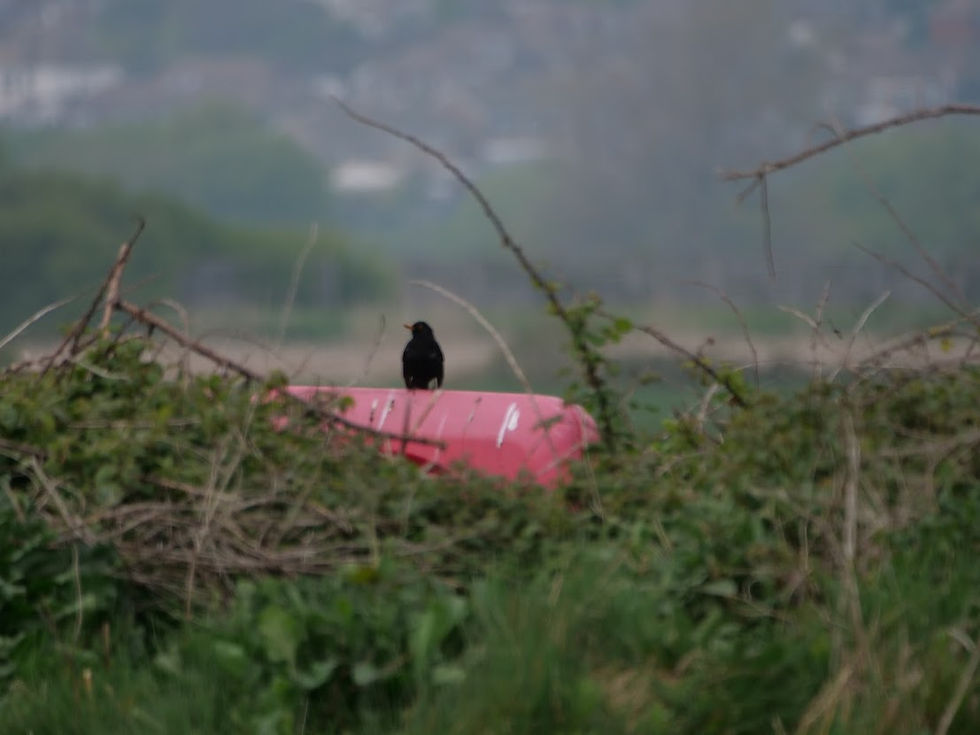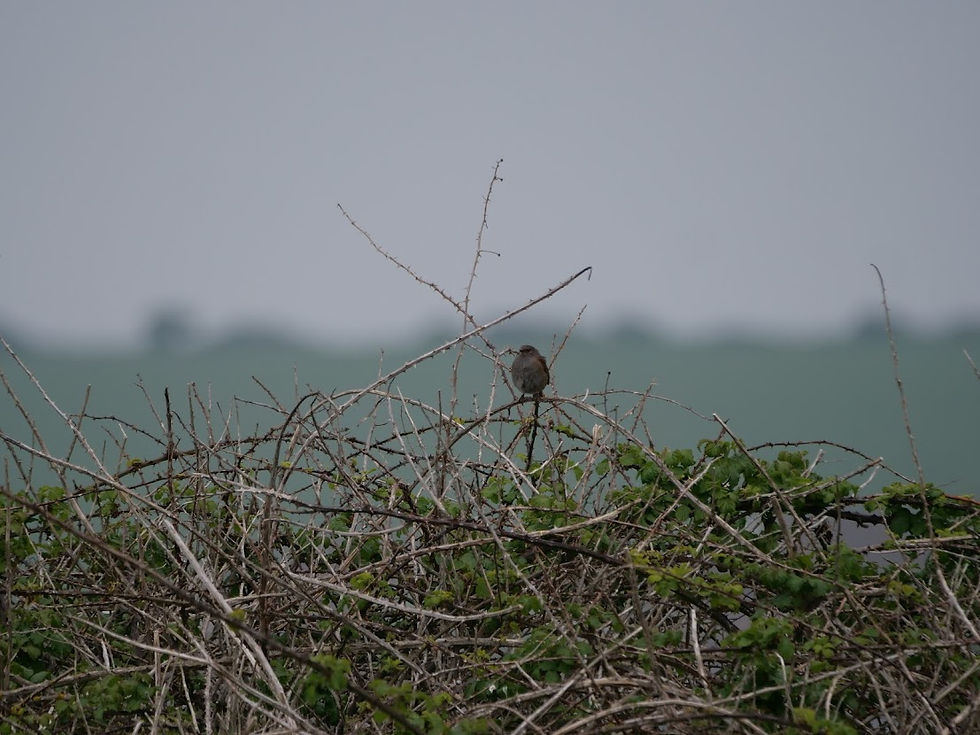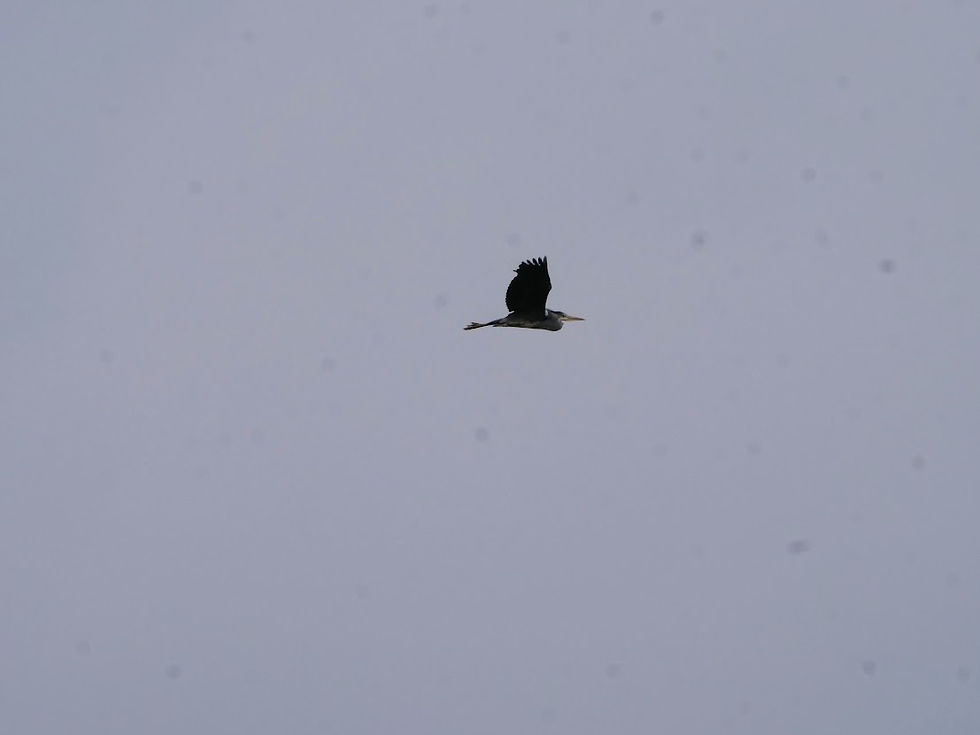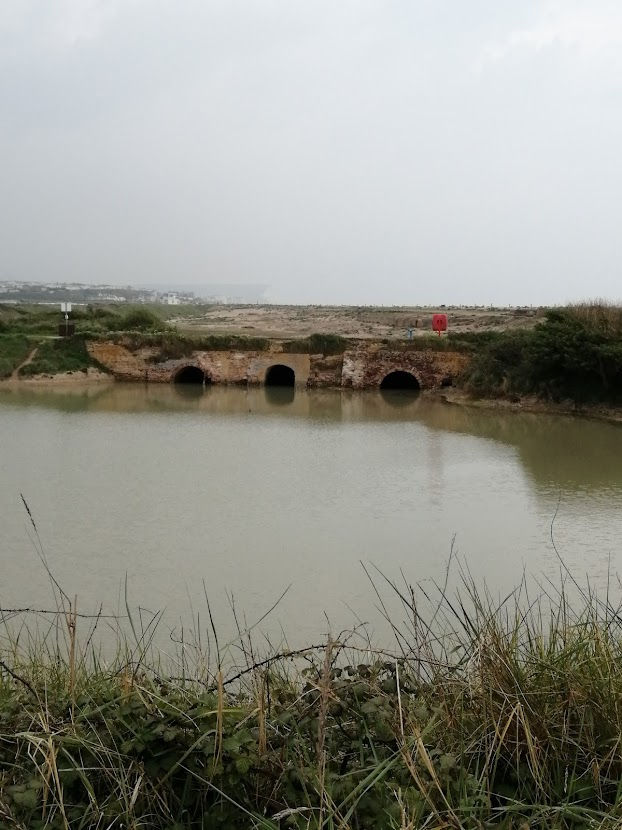Newhaven Port Nature Reserve/Tide Mills: birds & flowering plants seen on 03.05.22
- Sim Elliott

- May 4, 2022
- 4 min read
Updated: May 8, 2022
On the afternoon of 03.05.22 I took the 12 Bus to Tide Mills, between Newhaven and Seaford and walked around the Tide Mills site, and the land to the west of Tide Mills, formerly called Newhaven Port Nature Reserve.

The signage for Newhaven Port Nature Reserve still exists, although there is no mention of it on-line any more. The area between Tide Mills and the fenced-off area of the port (the Newhaven Port Nature Reserve) to the west consists of undulating ground, possible formed by dredging spoil; it is vegetated with grass and bramble and a variety of flowering wild plants; it feels like a brownfield site.
The land of Tide Mills itself consists of ruined houses and industrial building of the former Tide Mill, and the Chailey Heritage Marine Hospital. To the east of abandoned village of Tide Mills are unimproved fields and vegetated shingle (around the old mill pool) and the remains of the Chailey Heritage Marine Hospital; see: Chailey Hospital - The Tidemills at Bishopstone (webs.com). There was also a Marconi Radio Station in the sight in the early twentieth century; the remains of the base of the aerial can be seen, see: Marconi Radio Station - The Tidemills at Bishopstone (webs.com). During World War One there was a Royal Naval Airstation Newhaven was built in 1917. Seaplanes based there carried out anti U-boat patrols and escorted convoys moving in the Channel, see: The WW1 Air Station - The Tidemills at Bishopstone (webs.com)
The Newhaven Port Nature Reserve and Tide Mills is situated in the Ouse Valley, but this area is not part of the new Ouse Estuary Nature Reserve, which is to the north-north-west of Tide Mills. The Ouse Estuary Nature Reserve was created to conserve wildlife and provide flood management when a new business park and road were built. Ouse Estuary Nature Reserve | East Sussex County Council

Tide Mills is a fascinating sight of industrial and village archaeology.
The Mill House in 1880, from The ebb and flow of tide mills - South Downs National Park Authority

A Tidal Mill was built at Tide Mills in 1761 but last worked in 1883, 137 years ago. It was demolished in 1901, but was outlived by the village that grew up around it.
The Mill stopped working for good in 1883. The Mill, which provided work for so many men, had stopped and the beating heart of the village fell silent. The Mill buildings were converted and used as warehouses
People still lived in the cottages at Tide Mills but needed to find other work. Some worked in the fields surrounding Tide Mills or at the Docks in Newhaven, but all had to find other local work to make ends meet.
Slowly things like the school, blacksmith and carpenters disappeared from the village but the people stayed surviving the best they could. There was a great community feeling and everybody helped each other.
In 1937, Seaford council deemed the village of Tide Mills as unfit for habitation and issued an eviction order giving the residents nine months to move out. Everyone at Tide Mills, including Chailey Marine Hospital, was evicted.
For more about the history of Tide Mills see: Tidemill Village - The Tidemills at Bishopstone (webs.com) and The ebb and flow of tide mills - South Downs National Park Authority
There is some detail of the nature at Tide Mills here: Flora and Fauna - The Tide Mills Project
There follows a log of all the bird species I saw during my visit (13.30-16.00) and the flowing wild plants I saw in bloom.
Birds
I saw a Greenfinch, but did not photograph it.
I heard bit did not see Blue Tits and Great Tits
Blackbirds



Carrion Crows



Dunnocks




Grey Heron

Goldfinches


Herring Gulls


House Sparrows



Ringed Plovers (two individuals)








I took these photos and video at 800mm zoom, so I was a long way from the bird. Initially I thought one of these Ringed Plovers had hurt its wing, then, as there was another Ringed Plover watching, I thought it was breeding behaviour. But I did some on-line research, and found this: ringed plovers are too small to fend off a crow or gull through aggression so they use a more sneaky tactic, they pretend to be injured! A ringed plover will feign having a broken wing and run away from the nest, the predator, assuming the adult is now an easy target, will chase after it. Once the adult ringed plover has lured the predator far from the nest it will suddenly fly away. The predator now has not caught the adult nor is it able to find the nest having left it behind. The plover can then go back to incubating the eggs or caring for the chicks. Defending the Nest - LIVE: Teaching Through Nature I think this must have been what this Ringed Plover was doing; as on the beach there were Carrion Crows and Herring Gulls around, and people with dogs off leads.
From a board on the wildlife in the Newhaven Port Nature Reserve

Stonechats




Whitethroats
Not all these Whitethroats are necessarily different individuals; whilst there were a lot of Whitethroats at Tide Mills and the Newhaven Port Nature Reserve; they fly around a lot; so some of these birds may have been Whitethroats that I had already photographed








Woodpigeons


Wrens

Flowering Plants in Bloom
Sea Thrift

Common Milkweed ?

Buttercup

Common Vetch

Sea Kale

Daisies

Red Campion

Red Deadnettle

Forget-me-nots

Everlasting Pea

Bluebells

Hawthorne

Crab Apple


Dandelion

Garlic Mustard

Cow Parsley

Views
Mill Pond

Ruins of Chailey Heritage Marine Hospital

Mill buildings

Train line Newhaven-Seaford

Dredger in Newhaven Dock

Typical terrain and vegetation of Newhaven Port Nature Reserve


The remains of the Tide Mill

The water flow over the water wheels, in the arches. The mill stood on the bridge and extended out over the creek
Now derelict station, called at various times Bishopstone Railway Station, Tidemills Halt, and Bishopstone Beach Halt, see: Tidemill Village - The Tidemills at Bishopstone (webs.com)

Mill Creek


Ruined houses


The Tide Mills Project (2011)
Poster for last year's Tide Mills Project Heritage Celebration Week (September 2021) see The Tide Mills Project - Bringing Tide Mills back to life

The Changing Coastline








Comments